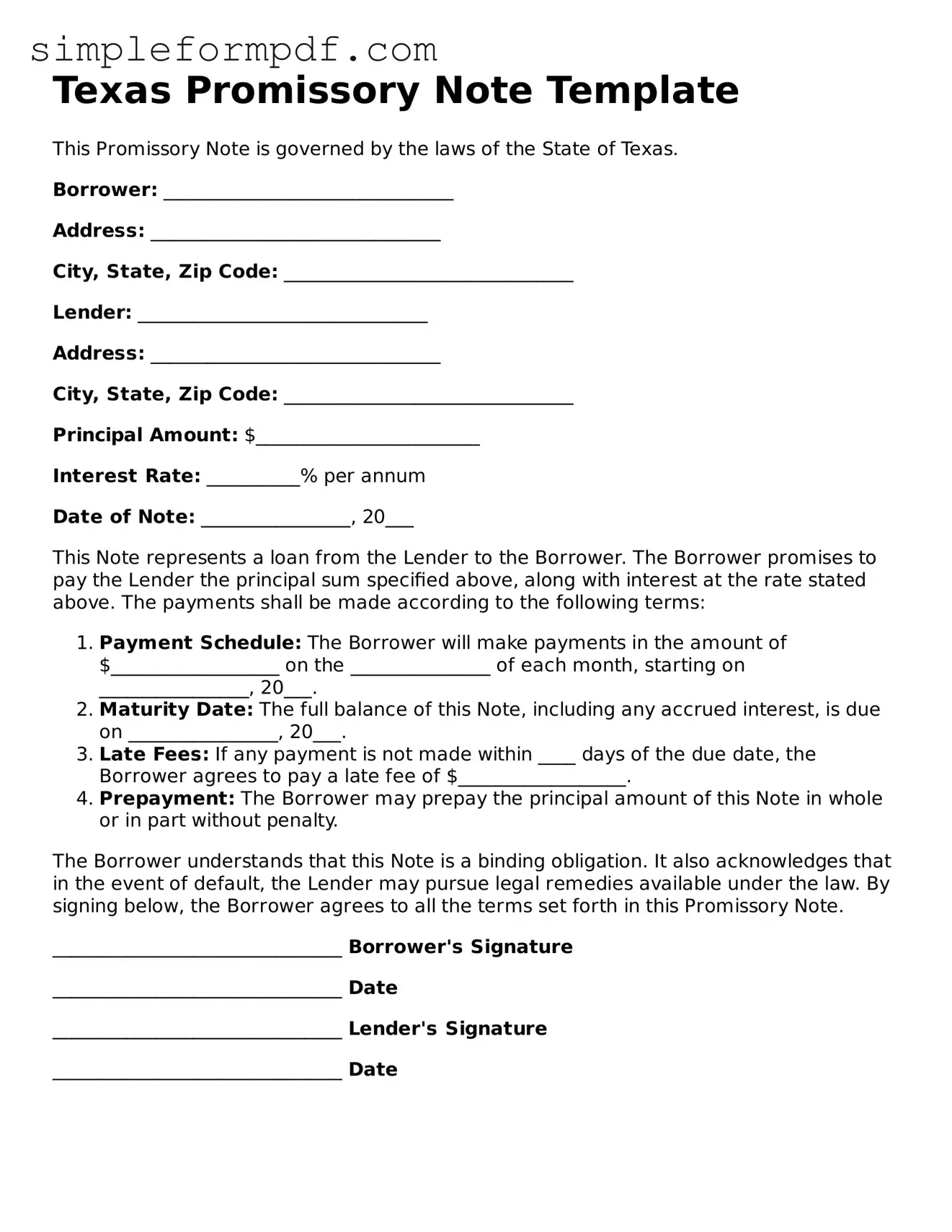Texas Promissory Note Template
This Promissory Note is governed by the laws of the State of Texas.
Borrower: _______________________________
Address: _______________________________
City, State, Zip Code: _______________________________
Lender: _______________________________
Address: _______________________________
City, State, Zip Code: _______________________________
Principal Amount: $________________________
Interest Rate: __________% per annum
Date of Note: ________________, 20___
This Note represents a loan from the Lender to the Borrower. The Borrower promises to pay the Lender the principal sum specified above, along with interest at the rate stated above. The payments shall be made according to the following terms:
- Payment Schedule: The Borrower will make payments in the amount of $__________________ on the _______________ of each month, starting on ________________, 20___.
- Maturity Date: The full balance of this Note, including any accrued interest, is due on ________________, 20___.
- Late Fees: If any payment is not made within ____ days of the due date, the Borrower agrees to pay a late fee of $__________________.
- Prepayment: The Borrower may prepay the principal amount of this Note in whole or in part without penalty.
The Borrower understands that this Note is a binding obligation. It also acknowledges that in the event of default, the Lender may pursue legal remedies available under the law. By signing below, the Borrower agrees to all the terms set forth in this Promissory Note.
_______________________________ Borrower's Signature
_______________________________ Date
_______________________________ Lender's Signature
_______________________________ Date
